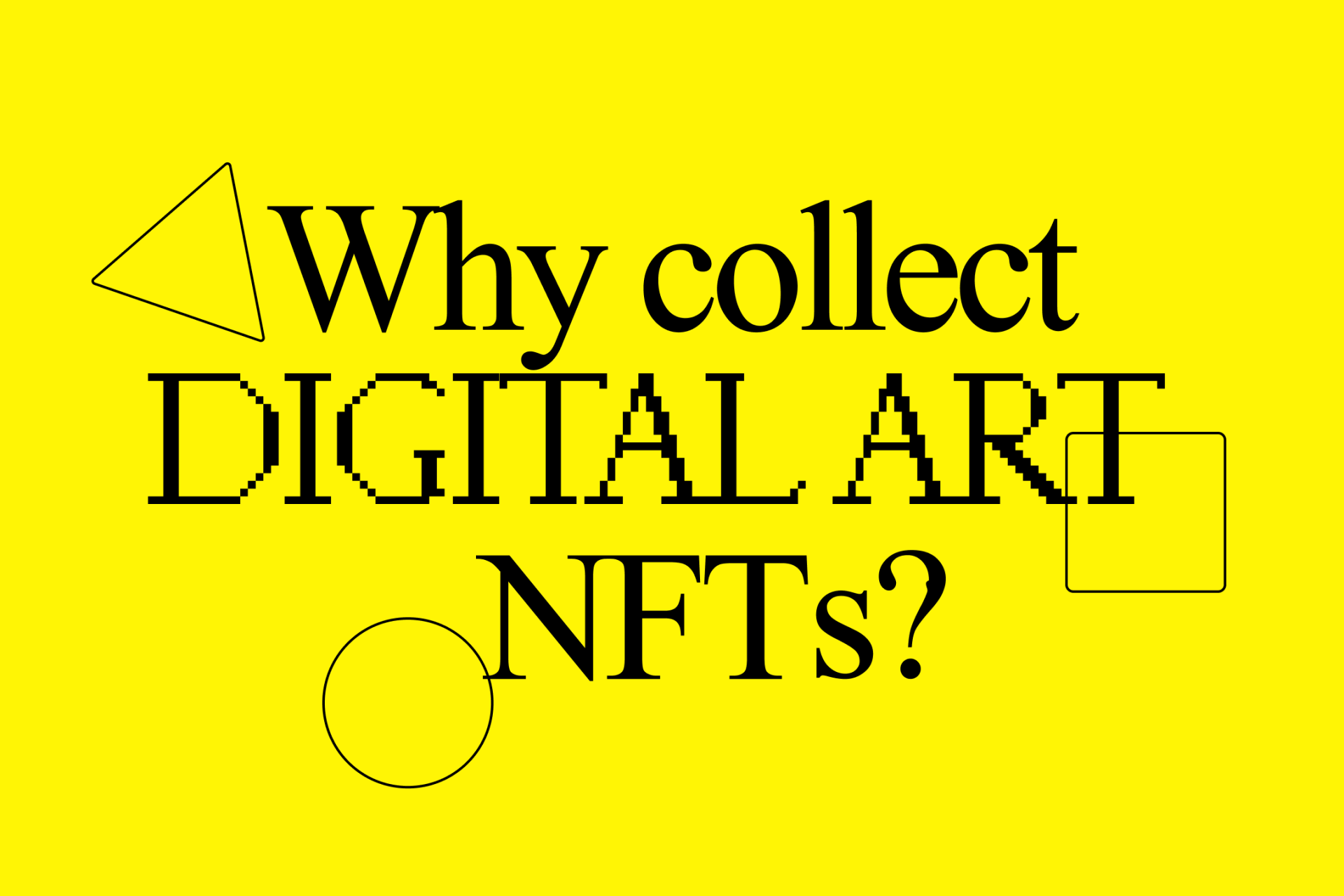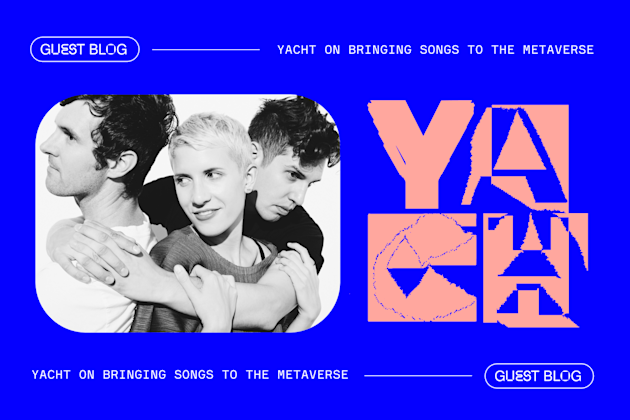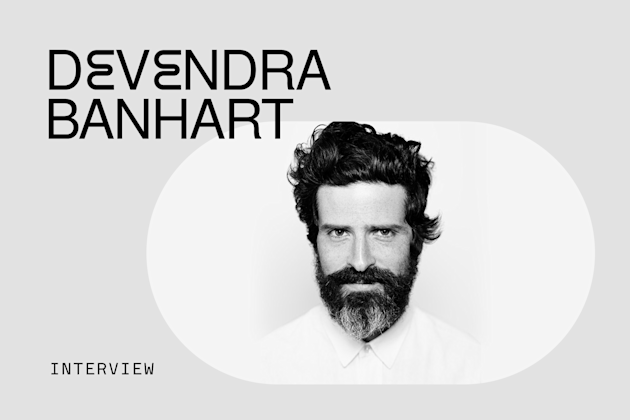Why collect digital art NFTs?

What if you could travel back in time to 2011 and buy a couple hundred Bitcoin for just a few dollars? Or crank up the time machine, head back to the early 1900s, and scoop up an early Matisse? Not only would you be rich—you’d also be a part of history.
Of course, hindsight is 20/20. While we all wish we could have predicted the future success of a revolutionary artist or soon-to-explode asset type, only a few collectors and investors are lucky enough to recognize this kind of possibility before it becomes mainstream. But how much of it is about luck, and how much of it is about having the vision to believe in something new and promising before it has its breakthrough moment?
Right now, as more and more artists see how the blockchain elegantly solves digital art’s provenance problem, NFTs are exploding across the internet. At the same time, as all the possibilities of the metaverse continue to come into view, pioneering collectors are diving in and setting the tone for what it means to collect and invest in the cultural assets of the future.
If you’ve been following Foundation, then you’ve already discovered some of the most exciting artists making waves in the NFT space. But who are the future-focused collectors who are defining the space, and what’s got them convinced that NFTs are worth their money and attention? And—perhaps most importantly—should you join them?
We sat down with four visionary collectors—Colborn Bell, Pablo Rodriguez-Fraile, Priyanka Desai, and Cuy Sheffield—about making moves in the digital art NFT space to get their predictions for where things are heading.
Based on our conversations, here are the five key reasons why you should start collecting digital art NFTs, too.
1. It’s a way to actively help establish a new cultural paradigm.
Culture can only evolve when groundbreaking creators have space and support to try new things. This is the way we set new precedents for how we think and exist as humans: By investing in people who break the mold, and by getting involved in the development of promising innovations early to guide and support their evolution.
Colborn Bell is co-founder of the vast Museum of Crypto Art (MoCA), which houses over 250 NFTs, and which he started with fellow crypto enthusiast Pablo Rodriguez-Fraile. When asked what motivated him to invest so much time and money into MoCA’s NFT collection, he responded, “At a certain point, investing in these digital worlds led us to the discussion, ‘What is the world we want to create? And what is the world that we want to see?’”
As Colborn brings up, collecting and displaying NFTs is a way to help form the future world he wants to be a part of. As he puts it, “[MoCA is] a first stop where you can begin to understand what metaverse spaces of the future could look like, and how we can begin to reimagine museums, galleries, and virtual worlds of the future.”
To Colborn and Pablo, purchasing NFTs for the MoCA collection is about so much more than making a financial investment—it’s about trying new things and experimenting in order to help the next paradigm of culture come into view. As Pablo describes it, “We didn't want to be speculators. We didn't want to come here just to make a few hundred bucks flipping NFTs. Instead, we want to help lay the foundation of what this world can become, because we truly believe this approach is going to be the future of immersive artistic experiences.”
2. While helping to build the future, you’re also getting in early on an expanding asset type.
A key concept of NFTs is their ability to give tamper-proof provenance (a record of ownership) to digital goods—and be portable across the internet. Now that NFTs have solved digital art’s provenance problem, more collectors and investors are getting on board. This influx of investment is enabling a broader audience to develop, and setting the stage for a larger community to enter the space.
Right now, we’re still at the beginning of a larger snowball effect. Traditional fine art had a $64B market in 2019, and investments made in fine artwork have had annualized returns of around 7% for the last 35 years. Knowing that, it’s not hard to recognize the potential of the digital art market to explode as NFTs become more and more available.
When we asked collector Priyanka Desai (who also leads operations for Flamingo DAO) why NFTs are a compelling asset type, she noted, “The scarcity aspect plays a big role. Having a piece of the internet that's fundamentally yours—something that you think is beautiful and unique and special—is not something we’ve been able to do until now.”
Priyanka also sees a lot more that’s possible beyond the novelty of owning something digital. “With NFTs, you could collect a high-value piece and fractionalize it, put it on a bonding curve, and sell fractional pieces of a work to a bunch of people. Or, let's say there's a really popular artist, like Pak. Someone could bundle a bunch of Paks, and create an index fund around that. Similar to a commodities ETF, you could have exposure to Pak without owning a singular Pak, because you have tokens that are a part of that index fund.”
When considering the potential of digital art NFTs as an asset type, it’s important to remember that these are extremely early days. A lot will be possible with NFT assets that we haven’t seen or even dreamed of yet, so by getting in early, you’re guaranteeing yourself a piece of what develops down the line.
3. You can help establish a market for the creative communities you care about.
As a society, we often underestimate the role of collectors in the evolution of culture. However, the early investment of a collector’s money and attention can directly enable an artist’s market to grow, and establish their work as something that holds real value.
Right now, early NFT collectors are setting the precedent for the crypto art and NFT markets, so it’s incredibly important to be intentional when deciding who and what to invest in. As an example of how this kind of intentionality can be put into practice, collector, writer, and crypto strategist Cuy Sheffield has been working on a number of initiatives around how crypto can build Black wealth. As he told us, “Black creators produce a lot of internet culture that has made social media platforms very successful, but it's traditionally been hard for these same creators to capture the value they create."
In his essay, “Why I’m Collecting Black Crypto Art,” Cuy further explains, “Crypto art—as a new form factor and platform for Black artists, curators, and collectors—is one of the most exciting new avenues that could spur a Black Digital Renaissance that would create and capture billions of dollars of value for Black communities across the world over the next decade.”
By collecting digital art NFTs by Black creators, Cuy is helping to establish a market for these artists, and intentionally building up cultural capital around their work. But it goes beyond the financial investment, too. Cuy has also been working with One/Off—a crypto-art focused collective whose core purpose is to develop a Black arts and culture ecosystem on the blockchain—to help get more collectors into NFTs by Black artists, and further expand the audience for their work. He sees a ton of potential for more curators, cultural institutions, and galleries to get involved, and help build up the markets of different artist communities through active relationship building, storytelling, and education.
We all know the mantra, “What we pay attention to grows.” This will especially be true in terms of crypto art and NFTs, so as a collector, this is a huge opportunity to invest in work that’s aligned with the future you want to help manifest.
4. Collecting NFTs is a way to showcase your taste and establish yourself as an early adopter.
In virtual spaces like SomniumSpace (where MoCA exists) and Cryptovoxels, many collectors are buying up land and constructing galleries to house their NFT art, instantly enabling them to become curators of their own metaverse galleries. This makes it possible for them to invite friends to enter the space and have an immersive experience with the works on display. As Colborn describes it, “With the digital artwork, we can blow it up to 30 feet tall and make it incredibly imposing, or we can make it six inches small. In digital space, you can play with size and scale and scope, and with floating elevators, and hanging stuff in empty space. It’s a powerful awakening of participants’ imagination, and an invitation to further define who you want to present yourself as, what your identity is, and the spaces that you want to be in.”
To define yourself as a collector, you don’t have to go as big as MoCA; you can also just follow your curiosity and collect pieces that catch your attention as you find them. That has been Priyanka’s approach, and while she doesn’t have her collection on display in the metaverse yet, she still gets a lot out of the experience: “I like looking at my grid of NFTs that I’ve collected. I'll just go and enjoy it whenever I want, and share it with friends. It's a way to put your taste on display, and showcase what you’re into.”
Creative expression can take many forms, and curating—whether it’s your sense of fashion, your taste in music, or an art collection—can be highly creative and rewarding. There’s no “right” or “wrong” NFT to collect; instead, it’s about learning what you like, developing your own unique taste, finding artists you believe in, and investing in pieces you're proud to own.
5. Lastly… it’s where the future’s heading.
Beyond the economic piece of the picture, NFTs represent a common digital language that will not become obsolete as the companies and platforms of today shift or fade away. Says Cuy Sheffield, “It's an open ecosystem that anyone can build for. It's not like you're locked into one platform, just hoping that they build a better way to display the work you’ve collected. Anyone can build platforms and hardware that support all NFTs. There's a big opportunity for entrepreneurs to build new products and services around this. And in the future, there'll be a much bigger user base of people who become interested in the art that I'm collecting now, in addition to infinite new ways that I can display it and share it.”
While we can’t predict exactly how the future will look, NFT technology will play an important role—so while the technology’s still unfolding, it’s an exciting time to get involved.
Ready to collect your first NFTs? Here’s how to get started.
The best way to get started is to do just that: Start.
It's easy to create a profile on Foundation, and then explore artists and artworks. Our site is curated, and we regularly feature artists whose work we love. Keep browsing until something catches your eye, and once you see a piece that you're excited about, jump in and place a bid!
You can keep growing your knowledge base by following artists whose work you enjoy, visiting their websites and social media, and subscribing to their newsletters to be sure you’re notified when they launch new NFTs. We also recommend getting involved with the NFT community on Twitter (a good way to start is by following Foundation’s “Creator List”). You can also join us on Discord to chat with artists, other collectors, and the Foundation team.
Overall, the more time you spend immersing yourself in the NFT space, the more you’ll come to understand it—and the more comfortable you’ll feel making decisions about what to collect. For more tips to set you in the right direction, see our guide to getting started as a collector. Happy collecting!
Read more

Bionic pop artist Viktoria Modesta on piercing through culture.

Guest Blog: YACHT on bringing songs to the metaverse.
